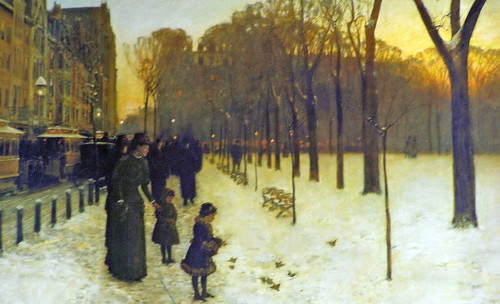
I'd say the best thing that came out of my trip to the Cantor museum is my new love for Wayne Thiebaud. The food, the colors... his pieces are SO much fun! I browsed through his book in the gift shop and I loved his city scenes too... I am looking forward to reading more about him in the coming months.

The Pop to Present exhibit was great. Some of my favorite pieces were Elmer Nelson Bischoff's "Interior with Cityscape" and Lichtenstein's "La Sortie"(below). I was thrilled to see some of Lichtenstein's work, having heard his name throughout the years, but never fully realizing that that bold, colorful, geometric style is attributed to him.

I also fell in love with Peter Milton's etchings/prints.
I thought of him after reading about Piranesi.

As I mentioned in the "Still Life with Crab" post, I may have been a bit more excited about the Baroque pieces had I done the reading prior to the visit. It was great to see some of their
really old pieces though, like Circle of Agnolo Gaddi's "Madonna and Child with Saints and Angels." (Not sure if I cited that correctly... my notes are a little fuzzy...)

In addition to getting a copy of Thiebaud's book, I am also looking forward to going to the DeYoung this summer. I wish it had not been so rainy and cloudy the day my roommate and I visited the Cantor...!
_________________________________________________________________
[Me standing at the not-so-pearly gates... ha ha]





























